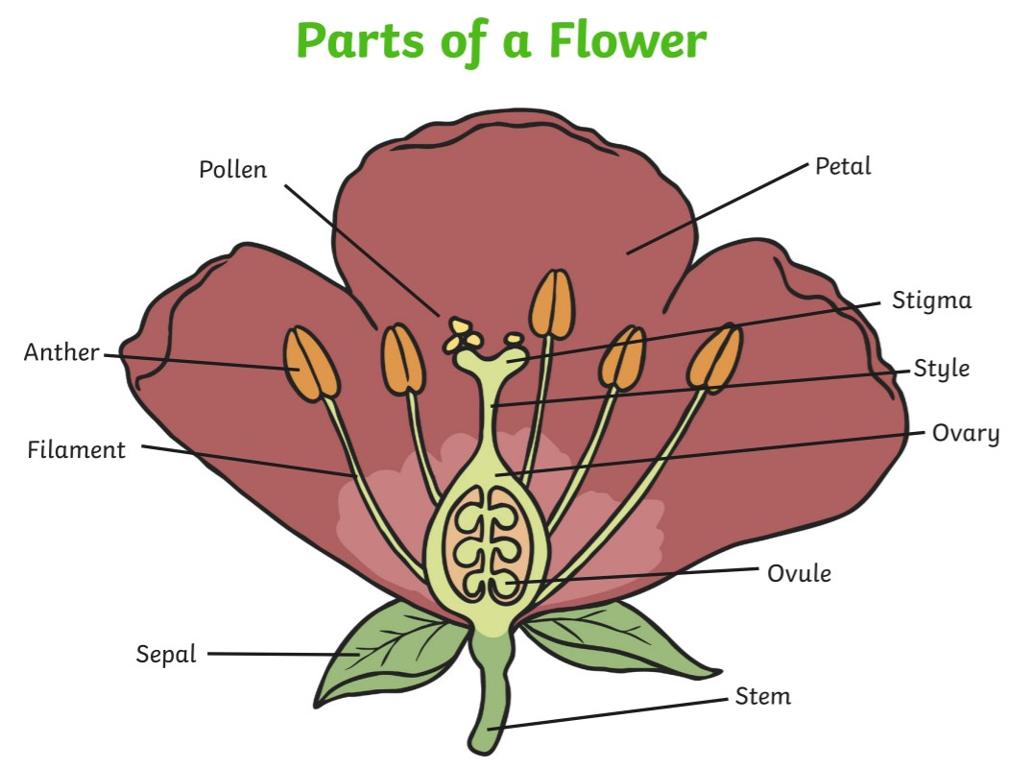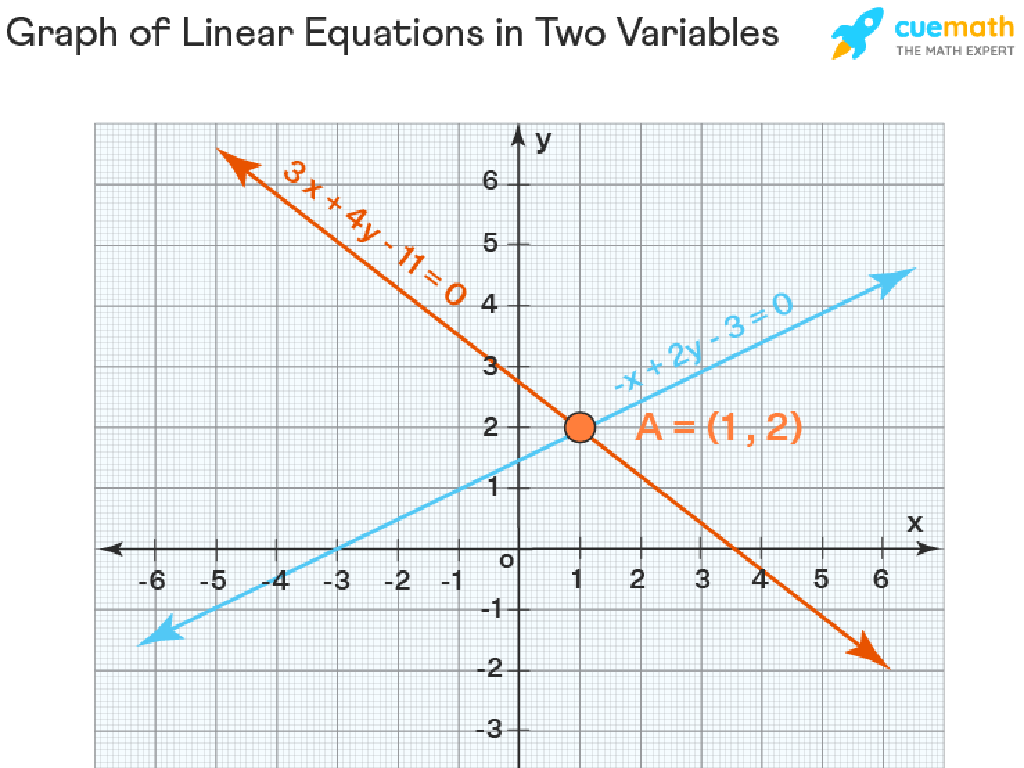Multiply A 2-Digit Number By A 2-Digit Number: Multi-Step Word Problems
Subject: Math
Grade: Fourth grade
Topic: Multiply By Two-Digit Numbers
Please LOG IN to download the presentation. Access is available to registered users only.
View More Content
Today’s Adventure: Multiplying Big Numbers!
– Multiplication as repeated addition
– If we have 4 groups of 3 apples, instead of adding 3+3+3+3, we multiply 4×3.
– Real-world use of two-digit multiplication
– To find out things like total cost of multiple items, or total points in a game.
– Steps to multiply two-digit numbers
– We’ll learn to line up the numbers and multiply each digit, then add the results.
– Practice with a word problem
|
Begin by explaining multiplication as a faster way of adding the same number multiple times. Emphasize the importance of two-digit multiplication in everyday situations, such as calculating expenses or scoring in games. Walk through the steps of multiplying two-digit numbers, ensuring to explain concepts like ‘carrying’ over numbers. Provide a relatable word problem for the students to solve, which will help solidify their understanding. For example, if a pack of stickers contains 24 stickers and they want to buy 3 packs, how many stickers will they have in total? This interactive approach will help students grasp the concept of multiplication in a fun and engaging way.
Multiplication Vocabulary
– Multiplicand: number to multiply
– If we have 23 x 15, 23 is the multiplicand
– Multiplier: number you multiply by
– In 23 x 15, 15 is the multiplier
– Product: result of multiplication
– Multiplying 23 by 15 gives a product of 345
|
This slide introduces students to the basic vocabulary of multiplication, which is essential for understanding and solving multi-step word problems involving two-digit numbers. The multiplicand is the number that is being multiplied. The multiplier is the number that the multiplicand is being multiplied by. The product is the result of the multiplication process. Use examples to illustrate each term, and ensure students can identify these components in a multiplication equation. Encourage them to use this vocabulary when discussing problems and solutions in class.
Breaking Down Multi-Step Problems
– Example: Multiply 12 by 34
– We multiply two 2-digit numbers
– Break into smaller parts
– (10 x 30), (10 x 4), (2 x 30), (2 x 4)
– Solve each part separately
– Easier calculations like 300, 40, 60, 8
– Add the results together
– Final sum is 408, the product of 12 x 34
|
This slide aims to simplify the process of multiplying two 2-digit numbers by breaking the problem into smaller, more manageable parts. Start with an example like 12 x 34, and demonstrate how to decompose each number into tens and ones. Then, show how to multiply each part separately, making sure to align the numbers correctly. Emphasize the importance of addition in the final step to combine all the partial products. Encourage students to practice this method with different numbers and to check their work by using the standard algorithm as a comparison.
Let’s Practice Multiplication!
– Multiply the ones: 3 x 5
– This gives us the first part of our answer: 15
– Tens by ones: 20 x 5
– Now we have another part: 100
– Ones by tens: 3 x 40
– This step gives us: 120
– Multiply the tens: 20 x 40
– The last multiplication gives us: 800
|
This slide is a step-by-step activity to help students understand the process of multiplying two-digit numbers. Start by multiplying the ones place digits to get a sense of the basic multiplication involved. Then, show how to multiply the tens place of one number by the ones place of the other, and vice versa, to build on their understanding of place value. Finally, multiply the tens places together. Each step should be followed by adding the products to find the final answer. Encourage students to write down each step and product as they work through the example. Provide additional similar problems for practice and ensure they understand each multiplication step before moving on to the next.
Understanding Carrying Over in Multiplication
– Carrying over in multi-digit multiplication
– When multiplying, numbers over 9 require carrying to the next place value.
– Why carrying over is necessary
– Carrying ensures accuracy in our calculations.
– Keeping multiplication organized
– It helps align numbers correctly for adding sums.
– Example: Multiplying 34 by 12
– Let’s multiply 34 by 12 step by step, carrying over when needed.
|
This slide introduces the concept of carrying over, which is crucial when multiplying two-digit numbers. Emphasize that carrying over is similar to carrying in addition but applies to multiplication. It’s important for keeping our work neat and ensuring we don’t lose track of any numbers. Use the example of 34 multiplied by 12 to show students how to carry over step by step. Write out the problem, multiply the ones place first, carry any tens over, then multiply the tens place and add the carried number. This will help students visualize the process and understand the importance of organization in multi-step multiplication problems.
Real-World Multiplication: Word Problems
– Apply multiplication to real-world scenarios
– Use skills in practical situations, like shopping or building
– Carefully read to find numbers to multiply
– Look for two 2-digit numbers in the problem
– Follow learned steps to calculate product
– Use the multiplication method we practiced
– Check your work for accuracy
|
This slide aims to help students apply their multiplication skills to solve real-world problems. Encourage them to read the problem thoroughly to identify the relevant numbers. Remind them of the steps we’ve learned: stacking the numbers, multiplying each digit of the bottom number by each digit of the top number, and adding the results. Emphasize the importance of double-checking their work. As an activity, students can solve different word problems that require multiplying two 2-digit numbers, such as calculating the total cost of items or the total number of objects in groups. Provide guidance and support as they work through the problems.
Class Activity: Multiplication Puzzles
– Pair up for puzzle solving
– Tackle multi-step problems
– Each puzzle involves multiplying two 2-digit numbers.
– Discuss your solution strategy
– How did you solve the problem? What steps did you take?
– Present findings to the class
|
This activity is designed to promote collaborative problem-solving and to reinforce the concept of multiplying two-digit numbers through practical application. Students will work in pairs to encourage teamwork and peer learning. Each pair will receive a set of multiplication puzzles that require them to read, understand, and solve multi-step word problems. After solving the puzzles, students will discuss their methods and strategies with their partner, then share their solutions with the class, fostering a collaborative learning environment. For the teacher: Prepare diverse puzzles with varying difficulty to cater to different skill levels. Ensure that each puzzle requires multiple steps to solve, such as finding partial products before reaching the final answer. Encourage students to explain their thought process during the presentation to enhance their understanding and communication skills.
Homework: Becoming Multiplication Masters
– Practice multiplication at home
– Review today’s learning steps
– Recall breaking down problems into smaller steps
– Aim to master two-digit multiplication
– Solve multi-step word problems
– Apply steps to new problems for practice
|
For homework, students should continue practicing two-digit multiplication through additional word problems. Encourage them to remember the steps discussed in class, such as breaking down the problem, multiplying the digits, and adding the results. This practice will help solidify their understanding and prepare them for more complex multiplication tasks. Provide a worksheet with multi-step word problems tailored to their level. Remind them that with each problem they solve, they’re on their way to becoming multiplication masters. In the next class, we’ll review these problems and celebrate their progress.






